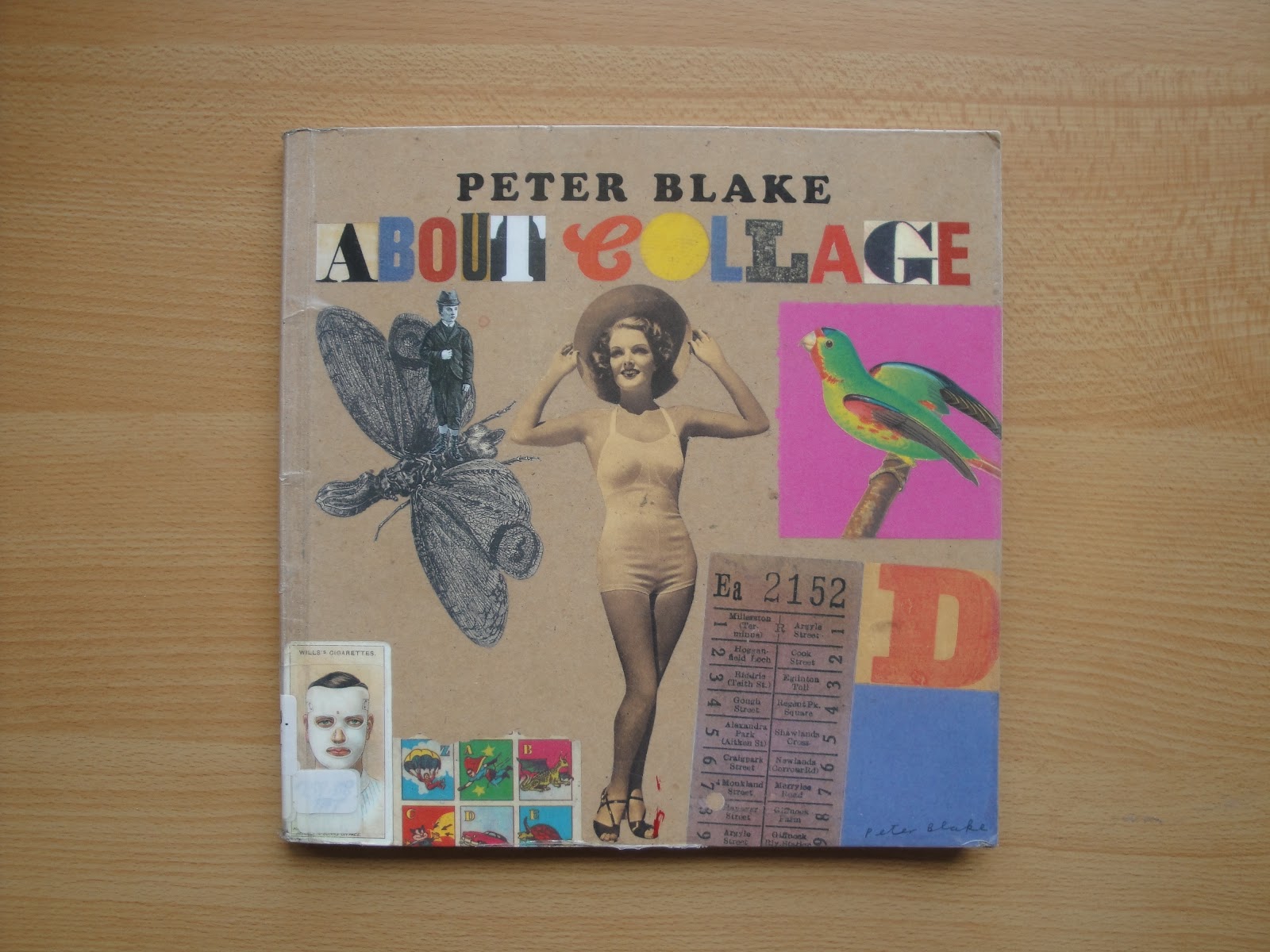I am a big fan of collage because it's a great method of altering or reinterpreting work to make something fresh. I use collage with my own drawings when I'm dissatisfied with the composition of a drawing or page or when I want to gather up source materials and mould them into something different. It's such a flexible way of working, and being into zines has made collage something I needed to use to get the right layout.
In the preface of this book, Laura Biggs (Director of Tate Liverpool) asserts that "the selection [of collages shown in the book] uncovers the human, irrepressible impulse to gather, fuse, and fix" (Blake et al, 2000). It's fascinating to look through the various assemblages - lots of stuck together magazine heads and old adverts and papers, but also plenty of protruding objects stuck onto old boards, scrap metal, rocks, etc. Clearly collage can be a lot more than paper stuck to paper. Blake explains that "collage can encompass anything where something is attached to something else" (Blake et al, 2000). This is evidenced in Karel Appel's Questioning Children (fig. 1) and Blake's own Memories of Place (fig. 2).
Objects protrude from both pieces. Appel's work is brightly and beautifully decorated across the collaged objects, turning them into colourful creatures, whereas Blake's work has more of a muted, still life feel to it.
 |
| fig 2. Peter Blake - Memories of Place, c.1982 |
The book discusses the collagists Kurt Schwitters, Joseph Cornell, and Eduardo Paolozzi, as well as anonymous collages. Blake muses on why collage might appeal to artists, and touches on the circumstances of people's entrance into collaging. He says "what prompts people to make objects is fascinating and a whole area in itself" (Blake et al, 2000), leaving that particular topic for the reader to consider.
- Blake, P, Ades, D, and Rudd, N. (2000). About Collage. London: Tate Gallery Pub. p. 9, 7,11
- Tate.org.uk, (2004). 'Questioning Children', Karel Appel | Tate. [online] Available at: http://www.tate.org.uk/art/artworks/appel-questioning-children-t04158 [Accessed 16 Jun. 2014]


Great and that i have a keen supply: kitchen renovation price
ReplyDelete